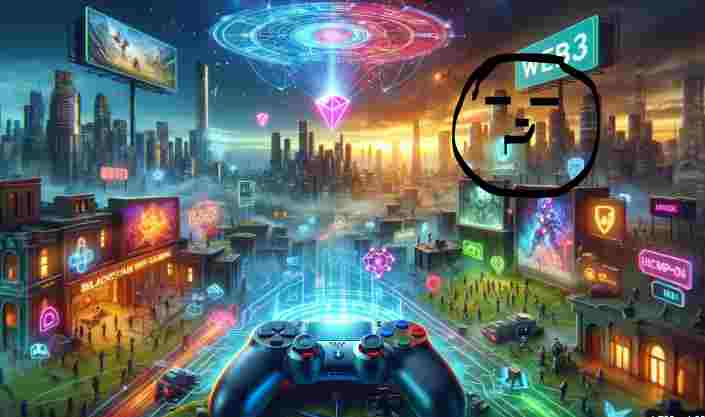If you’ve been paying attention to the buzz around the digital world lately, you’ve probably heard about “Web3 gaming.” This isn’t just another tech fad. It’s a revolutionary shift in how we play, create, and think about games. Think back to 2010 when Bitcoin was just starting to gain traction. Most people dismissed it as a passing trend. Fast forward to today, and Bitcoin has transformed the financial landscape. Similarly, Web3 gaming is set to redefine the gaming industry, bringing in a wave of opportunities and innovations that were previously unimaginable.
So, why exactly is Web3 gaming being compared to Bitcoin in its early days? Let’s dive into the details and explore why you should be paying attention to this emerging phenomenon. We’ll cover what Web3 gaming is, how it’s different from traditional gaming, and why it’s poised to explode in popularity. Ready to level up your understanding? Let’s go!
Table of Contents
ToggleWhat is Web3 Gaming?
Before we get into the nitty-gritty, let’s break down what Web3 gaming actually is. At its core, Web3 gaming leverages blockchain technology to create decentralized gaming ecosystems. This means players have true ownership of in-game assets, transparent and fair gaming environments, and the ability to earn real-world value from their gaming activities.
Step 1: Understanding Blockchain and Decentralization
To grasp Web3 gaming, you need a basic understanding of blockchain and decentralization. Unlike traditional games where all data and assets are controlled by a central authority (like a game developer or publisher), Web3 games operate on a blockchain. This ensures that all transactions and assets are transparent, secure, and owned by the players.
- Decentralization: No single entity controls the game. This eliminates the risk of server shutdowns or unfair changes by developers.
- Transparency: Every transaction is recorded on a public ledger, ensuring fairness and trust.
- Ownership: Players truly own their in-game assets, which can be traded or sold outside the game.
Step 2: The Power of NFTs (Non-Fungible Tokens)
In Web3 gaming, NFTs play a crucial role. NFTs are unique digital assets verified using blockchain technology. In gaming, this translates to unique characters, items, or even virtual real estate that players can buy, sell, or trade.
- Unique Assets: Each NFT is one-of-a-kind, giving value and rarity to digital items.
- Real-world Value: NFTs can be traded on various marketplaces, allowing players to earn real money.
- Interoperability: NFTs can be used across different games and platforms, opening up endless possibilities for players.
Step 3: Play-to-Earn Models
One of the most exciting aspects of Web3 gaming is the play-to-earn model. Traditional games often require players to spend money, but Web3 games offer the chance to earn money by playing.
- Earning Potential: Players can earn cryptocurrencies or NFTs through gameplay, which can be converted to real money.
- Incentivized Engagement: This model encourages longer and more meaningful engagement from players.
- Community Growth: Play-to-earn attracts a diverse player base, fostering a vibrant gaming community.
Step 4: Interoperability and Cross-Platform Play
Web3 gaming promotes interoperability, allowing assets and progress to be transferred between different games and platforms. This breaks down the silos seen in traditional gaming.
- Cross-Game Assets: Use your NFT sword from one game in another.
- Unified Ecosystems: Connect with other players across multiple platforms.
- Seamless Experience: Enjoy a more fluid and connected gaming journey.
Step 5: Enhanced Security and Fairness
Blockchain’s security features ensure that Web3 games are fairer and safer for players. This technology prevents cheating, hacking, and unfair practices often seen in traditional games.
- Anti-Cheat Mechanisms: Immutable records prevent tampering.
- Fair Rewards: Transparent algorithms ensure fair distribution of rewards.
- Secure Transactions: Players can trade assets without fear of fraud.
Step 6: Community Governance and Participation
In Web3 gaming, players have a say in the development and management of the game. This is usually done through decentralized autonomous organizations (DAOs).
- Player Governance: Vote on game updates, policies, and new features.
- Collaborative Development: Work directly with developers.
- Shared Ownership: Players can hold tokens that give them a stake in the game’s success.
Step 7: Diverse and Inclusive Ecosystems
Web3 gaming opens up opportunities for diverse and inclusive gaming experiences. Developers from all backgrounds can create and publish games without needing massive budgets.
- Indie Game Growth: Support for smaller developers leads to more varied game offerings.
- Global Access: Games can reach players worldwide without regional restrictions.
- Cultural Representation: More diverse stories and characters in games.
Step 8: Future-Proofing Your Gaming Experience
Investing time and resources in Web3 gaming now can set you up for the future. Just as early Bitcoin adopters benefited greatly, getting involved in Web3 gaming early on could provide significant rewards.
- Early Adoption Benefits: Be part of the pioneering community.
- Long-Term Value: As the ecosystem grows, so will the value of your assets.
- Stay Ahead of the Curve: Be at the forefront of gaming innovation.
Conclusion
Web3 gaming is not just a trend; it’s a revolution. It’s transforming the gaming landscape by giving power back to players, ensuring fairness, and creating real-world value through play. Much like Bitcoin in its early days, Web3 gaming is poised to disrupt the industry in ways we are only beginning to understand. Whether you’re a casual gamer, a hardcore enthusiast, or an investor looking for the next big thing, Web3 gaming offers something for everyone. Dive in now, and you could be part of the next big digital revolution!
THAT’S EVERYTHING!
